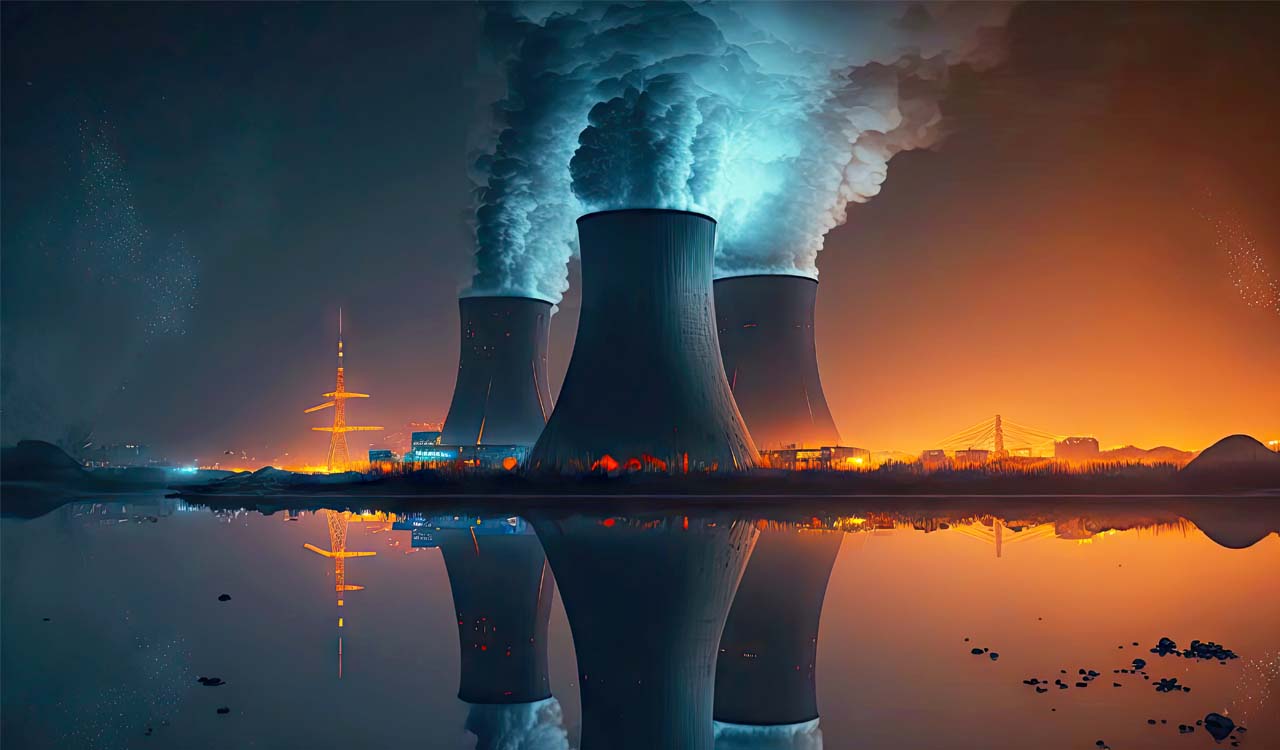Editorial: Big shift in India’s nuclear policy

The new FDI window could transform India’s nuclear landscape from an insular, slow-moving domain into a vibrant arena of investment and innovation
Published Date – 28 April 2025, 08:22 PM

Like the rest of the world, India needs to focus its attention on clean energy to reduce the carbon footprint. Nuclear power, considered a clean, carbon-free source of energy, is crucial for the country to achieve its target of ‘net zero’ carbon emissions by 2070. However, nuclear power currently accounts for just over 8 GW, roughly 2% of the installed capacity. This is because India’s nuclear industry has long been a government monopoly, with state-owned entities overseeing every aspect from uranium mining to power generation. It is time for bold reforms in this sector. The NDA government is now considering allowing up to 49% foreign direct investment (FDI) in nuclear power plants, signalling a major policy shift. This is a welcome development as it will help boost nuclear capacity and reduce reliance on coal as part of the country’s carbon reduction goals. India’s nuclear power sector has long been cloaked in strategic caution and the FDIs have so far been barred due to security concerns and the legal framework established under the Atomic Energy Act of 1960 and the Civil Liability for Nuclear Damage Act of 2010. A major sticking point has also been the issue of supplier liability, which has deterred many global players despite the 2008 civil nuclear agreement between India and the United States. The latest proposal marks a major turning point for one of the tightly controlled sectors and helps in accelerating the country’s clean energy transition.
Paired with the proposed easing of liability laws and the long-overdue entry of Indian private players, this new FDI window could transform the nuclear landscape from an insular, slow-moving domain into a vibrant arena of investment and innovation. The opening up of the sector could also provide a new avenue for strategic trade negotiations with the Trump Administration. For a country targeting 100 gigawatts of nuclear capacity by 2047, such bold reforms are needed. Nuclear energy is India’s best bet for reliable, round-the-clock clean power, especially as it seeks to phase down coal without stalling growth. Solar and wind are indispensable, but they are also intermittent. In 2008, a civil nuclear agreement with the US provided for deals worth billions of dollars with American companies. However, they have been deterred by the risk of unlimited exposure in the event of an accident. If the latest proposals go through, together with plans to ease nuclear liability laws and allow domestic private players into the sector, they could remove the impediments to the government’s aim to expand nuclear power capacity by 12 times to 100 gigawatts by 2047. Building nuclear plants is an expensive proposition, requiring both capital and modern technology. Opening the nuclear sector presents an opportunity for India to build a robust supply chain ecosystem. At the same time, allowing foreign investments should not lead to the weakening of sovereign control over critical safety and regulatory standards.






